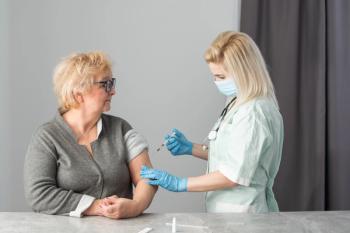
Research sheds new light on Parkinson's disease treatment
Medical practitioners treating Parkinson's disease (PD) tend to focus on controlling patients' movement disorders. So said Monique Giroux, M.D., medical director of the National Parkinson Foundation Center of Excellence at the Cleveland Clinic Foundation. But for the patient, other disease-related symptoms are sometimes just as troubling as the motor disorders.
Medical practitioners treating Parkinson's disease (PD) tend to focus on controlling patients' movement disorders. So said Monique Giroux, M.D., medical director of the National Parkinson Foundation Center of Excellence at the Cleveland Clinic Foundation. But for the patient, other disease-related symptoms are sometimes just as troubling as the motor disorders.
A number of major treatment centers are looking at PD patients more comprehensively. This has pharmaceutical implications, Giroux said. She spoke at a recent press conference in Washington, D.C., sponsored by the National Institute of Neurological Disorders & Stroke (NINDS). "These symptoms have started to receive a lot of attention only within the past half-decade or so," she said, "despite the fact that the hallucinations, dementia, and cognitive problems of PD increase the potential for placement into nursing homes, and the depression significantly worsens quality of life."
Over half of PD patients suffer depression, Giroux explained. And researchers think this is not just a reaction to the disease but rather a part of the biochemical abnormality, with a change in the neurotransmitters causing depression. Various antidepressant medications have proved helpful, Giroux said, including selective serotonin reuptake inhibitors (SSRIs) such as paroxetine and Zoloft (sertraline, Pfizer), as well as bupropion.
New methods are emerging for treating motor symptoms as well, said Giroux. Earlier guidelines suggest a dopamine agonist or levodopa for use as initial monotherapy for PD.
Levodopa is the gold standard in treating PD, extending the period that many patients can lead relatively normal lives. However, new strategies take into account that the first medicine used for patients in early Parkinson's could affect their symptoms later. "So there is a move toward a 'levodopa-sparing' strategy in support of alternative medicines such as the dopaminergic agonists. The two most commonly used medications in that category are ropinirole and pramipexole," said Giroux.
The levodopa-sparing strategy seems to be effective in delaying or reducing the motor complications and the on-and-off fluctuations in the duration of effectiveness of a drug, where the drug works one moment but wears off before the next dose is due. That creates a situation where practitioners can stratify patients, explained Giroux. This strategy seems to be best for younger patients who have greater risks of motor complications and dyskinesias but a lower risk of the medication-related side effects. They also have a longer time to live with Parkinson's.
On the other hand, she said, older patients don't have as many years to live with the disease and, as it happens, they tend to have fewer significant problems with the motor fluctuations and dyskinesias and greater risk for the side effects. So levodopa, which presents a slightly lower risk for these side effects, may be the better first choice for older patients, Giroux told the audience.
As research continues into other alternative medications, apomorphine (Apokyn, Mylan Bertek), an injectable dopaminergic agonist for advanced Parkinson's, can be used as a rescue therapy. As the patient's medication wears off and the next dose is not due for perhaps an hour or two, apomorphine can be used. While it has a very short duration of effectiveness, it is very fast-acting.
NINDS identifies Parkinson's as the second most common neurological disease in the United States, affecting half a million or more people. "After factoring in office visits, Social Security payments, nursing home expenditures, and lost income, the total cost to the nation is estimated to exceed $5.6 billion annually," Giroux noted.
Newsletter
Pharmacy practice is always changing. Stay ahead of the curve with the Drug Topics newsletter and get the latest drug information, industry trends, and patient care tips.































































































































































